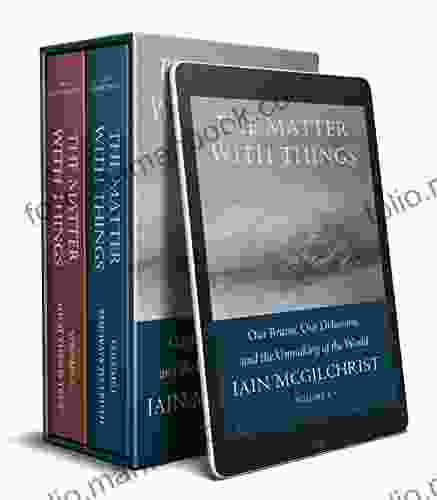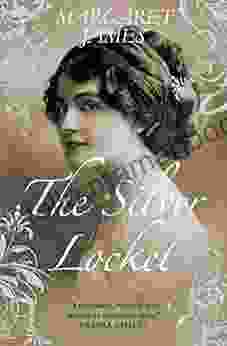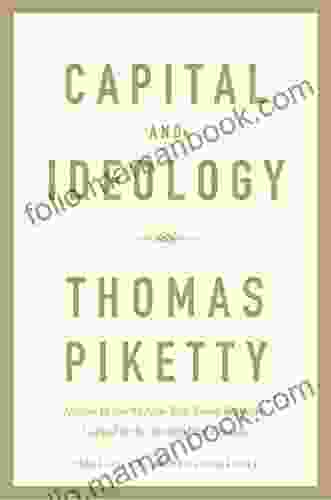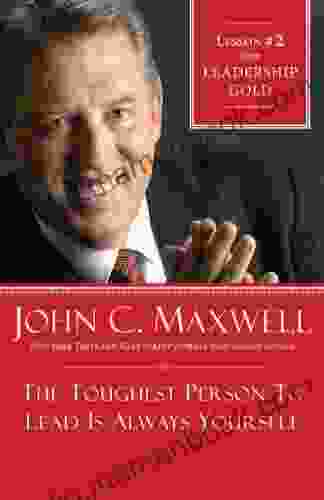The Matter with Things: Exploring the Materiality of Objects and Their Impact on Our Lives

In the realm of human existence, objects play a pivotal role, shaping our experiences, influencing our behaviors, and molding our identities. The materiality of things permeates every aspect of our lives, from the mundane objects we use daily to the cherished possessions we hold dear. In this article, we embark on an exploration of the matter with things, delving into the multifaceted relationship between objects, humans, and the environment.
4.7 out of 5
| Language | : | English |
| File size | : | 27030 KB |
| Text-to-Speech | : | Enabled |
| Screen Reader | : | Supported |
| Enhanced typesetting | : | Enabled |
| Word Wise | : | Enabled |
| Print length | : | 2996 pages |
The Intimate Connection between Objects and Humans

Objects are not mere inert entities; they possess a hidden life force, connecting us to our past, present, and future. Through the objects we surround ourselves with, we express our values, aspirations, and memories. A favorite coffee mug becomes a cherished companion, carrying the warmth of our morning rituals. An heirloom passed down through generations becomes a tangible link to our ancestors, evoking a sense of continuity and belonging.
The bond between humans and objects is deeply ingrained in our psychology. Objects serve as extensions of ourselves, reflecting our hopes, dreams, and fears. We attribute them with symbolic meanings, imbuing them with emotional significance. The teddy bear we clung to as children becomes a symbol of comfort and security. The graduation cap we wear represents years of hard work and achievement.
Objects as Cultural Artifacts and Historical Markers
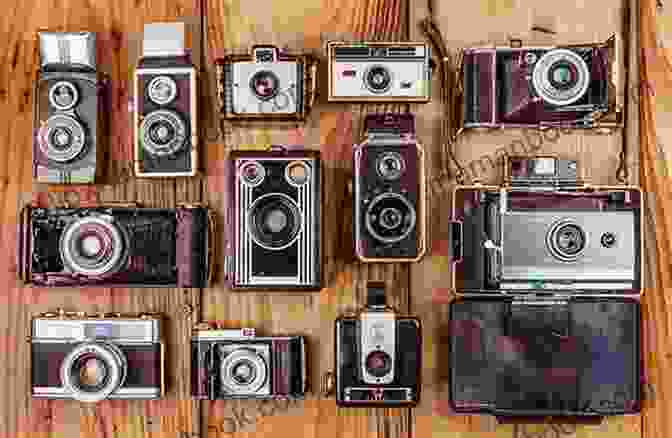
Objects are not just personal possessions; they are also cultural artifacts, reflecting the values, beliefs, and technologies of their time. Through objects, we can trace the evolution of human civilization, from the stone tools of our ancestors to the cutting-edge gadgets we use today. A collection of vintage cameras offers a glimpse into the history of photography, showcasing the ingenuity and technological advancements that have shaped this art form.
Objects can also serve as historical markers, preserving the memory of past events and people. A war medal, for example, might be passed down through generations, bearing witness to the sacrifices made during a particular conflict. An old photograph album might capture precious moments in time, telling the story of a family or community.
The Environmental Impact of Materiality
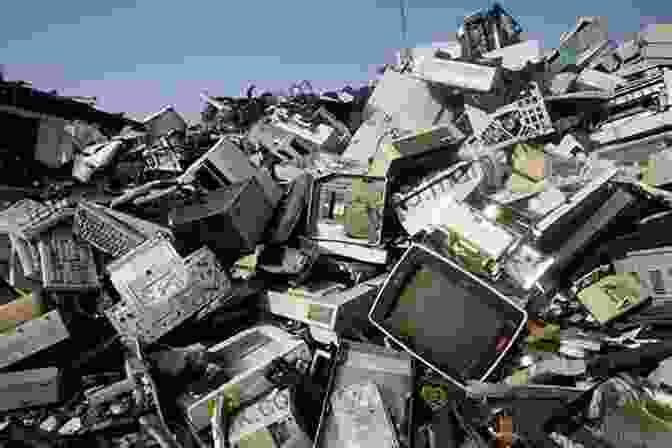
While objects enrich our lives, their production and consumption also have significant environmental implications. The extraction of raw materials, manufacturing processes, and disposal of discarded objects all contribute to resource depletion, pollution, and climate change. Electronic waste, for instance, is a growing global problem, posing threats to human health and ecosystems.
Addressing the environmental impact of materiality requires a shift in our consumption habits and a move towards more sustainable practices. This includes reducing our reliance on single-use plastics, repairing and reusing items instead of discarding them, and supporting businesses that prioritize environmental responsibility.
The Role of Objects in Consumer Culture

In today's consumer-driven society, objects play a central role in shaping our desires and influencing our spending habits. Advertisers use sophisticated techniques to convince us that we need certain products to be happy and fulfilled. The constant bombardment of marketing messages can create a sense of dissatisfaction and materialism, leading us to pursue endless consumption.
Breaking free from the clutches of consumer culture requires a conscious effort to re-evaluate our relationship with things. Instead of chasing the latest gadgets or trends, we can focus on building meaningful connections with objects that truly enhance our lives. By choosing quality over quantity and supporting sustainable brands, we can make more mindful consumption choices.
The matter with things is a complex and multifaceted phenomenon. Objects are more than just physical entities; they are extensions of ourselves, cultural artifacts, historical markers, and environmental concerns. By understanding the intricate relationship between objects, humans, and the environment, we can make more conscious choices about the things we acquire, use, and discard. By valuing sustainability, cherishing personal connections, and breaking free from consumer culture, we can cultivate a more meaningful and fulfilling life with things.
In the words of the philosopher Martin Heidegger, "Things themselves never reveal their own nature. They are always appropriated by us, and thus our appropriation of them distorts their nature." By embracing a deeper understanding of the matter with things, we can unlock their true potential, enriching our lives while safeguarding the well-being of our planet.
4.7 out of 5
| Language | : | English |
| File size | : | 27030 KB |
| Text-to-Speech | : | Enabled |
| Screen Reader | : | Supported |
| Enhanced typesetting | : | Enabled |
| Word Wise | : | Enabled |
| Print length | : | 2996 pages |
Do you want to contribute by writing guest posts on this blog?
Please contact us and send us a resume of previous articles that you have written.
 Top Book
Top Book Novel
Novel Fiction
Fiction Nonfiction
Nonfiction Literature
Literature Paperback
Paperback Hardcover
Hardcover E-book
E-book Audiobook
Audiobook Bestseller
Bestseller Classic
Classic Mystery
Mystery Thriller
Thriller Romance
Romance Fantasy
Fantasy Science Fiction
Science Fiction Biography
Biography Memoir
Memoir Autobiography
Autobiography Poetry
Poetry Drama
Drama Historical Fiction
Historical Fiction Self-help
Self-help Young Adult
Young Adult Childrens Books
Childrens Books Graphic Novel
Graphic Novel Anthology
Anthology Series
Series Encyclopedia
Encyclopedia Reference
Reference Guidebook
Guidebook Textbook
Textbook Workbook
Workbook Journal
Journal Diary
Diary Manuscript
Manuscript Folio
Folio Pulp Fiction
Pulp Fiction Short Stories
Short Stories Fairy Tales
Fairy Tales Fables
Fables Mythology
Mythology Philosophy
Philosophy Religion
Religion Spirituality
Spirituality Essays
Essays Critique
Critique Commentary
Commentary Glossary
Glossary Bibliography
Bibliography Index
Index Table of Contents
Table of Contents Preface
Preface Introduction
Introduction Foreword
Foreword Afterword
Afterword Appendices
Appendices Annotations
Annotations Footnotes
Footnotes Epilogue
Epilogue Prologue
Prologue Alta H Mabin
Alta H Mabin Alex Wellerstein
Alex Wellerstein Roger Zelazny
Roger Zelazny Elizabeth Young
Elizabeth Young Paulo Coelho
Paulo Coelho John Faunce
John Faunce Yaswanth Nukasani
Yaswanth Nukasani Stella Tartsinis
Stella Tartsinis Mark Stone
Mark Stone G Victor Hallman
G Victor Hallman Bob Woodward
Bob Woodward Tracey West
Tracey West Tristan Johnson
Tristan Johnson Leon Stevens
Leon Stevens Michele Gilcrest
Michele Gilcrest Nina Sattler Hovdar
Nina Sattler Hovdar Laura Andersen
Laura Andersen Eric Jager
Eric Jager Alastair Reynolds
Alastair Reynolds John Inman
John Inman
Light bulbAdvertise smarter! Our strategic ad space ensures maximum exposure. Reserve your spot today!
 Randy HayesFollow ·18.1k
Randy HayesFollow ·18.1k Charlie ScottFollow ·7.6k
Charlie ScottFollow ·7.6k Floyd RichardsonFollow ·15.5k
Floyd RichardsonFollow ·15.5k Matt ReedFollow ·15.3k
Matt ReedFollow ·15.3k Herb SimmonsFollow ·13.3k
Herb SimmonsFollow ·13.3k Duncan CoxFollow ·8.4k
Duncan CoxFollow ·8.4k Geoffrey BlairFollow ·7.1k
Geoffrey BlairFollow ·7.1k Edward ReedFollow ·18k
Edward ReedFollow ·18k
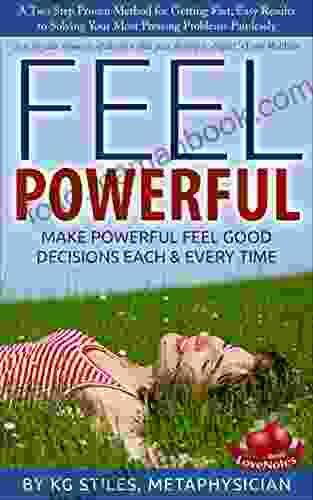
 Dean Cox
Dean CoxHow to Make Decisions Easily & Effortlessly: The...
The Different Types of Decisions There...
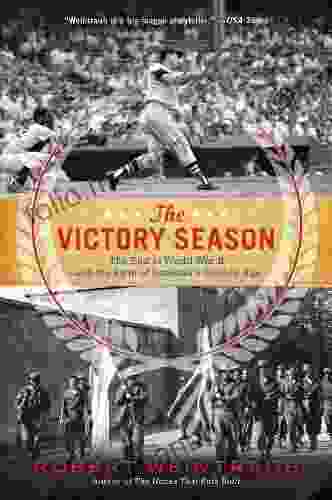
 Gustavo Cox
Gustavo CoxThe End of World War II and the Birth of Baseball's...
The end of...

 Patrick Rothfuss
Patrick RothfussThe Dantes: An 11-Family Saga of Billionaires, Soulmates,...
The Dantes is an epic family saga that follows...
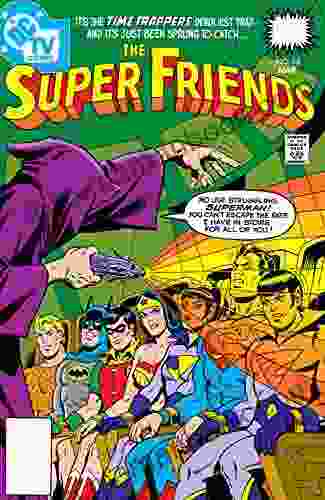
 Dylan Mitchell
Dylan MitchellSuper Friends: The Animated Adventures That Defined a...
In the vibrant landscape of American...

 Jamal Blair
Jamal BlairCollege For Students With Disabilities: We Do Belong
College can be a...
4.7 out of 5
| Language | : | English |
| File size | : | 27030 KB |
| Text-to-Speech | : | Enabled |
| Screen Reader | : | Supported |
| Enhanced typesetting | : | Enabled |
| Word Wise | : | Enabled |
| Print length | : | 2996 pages |


